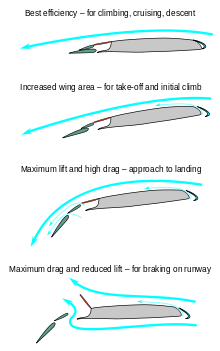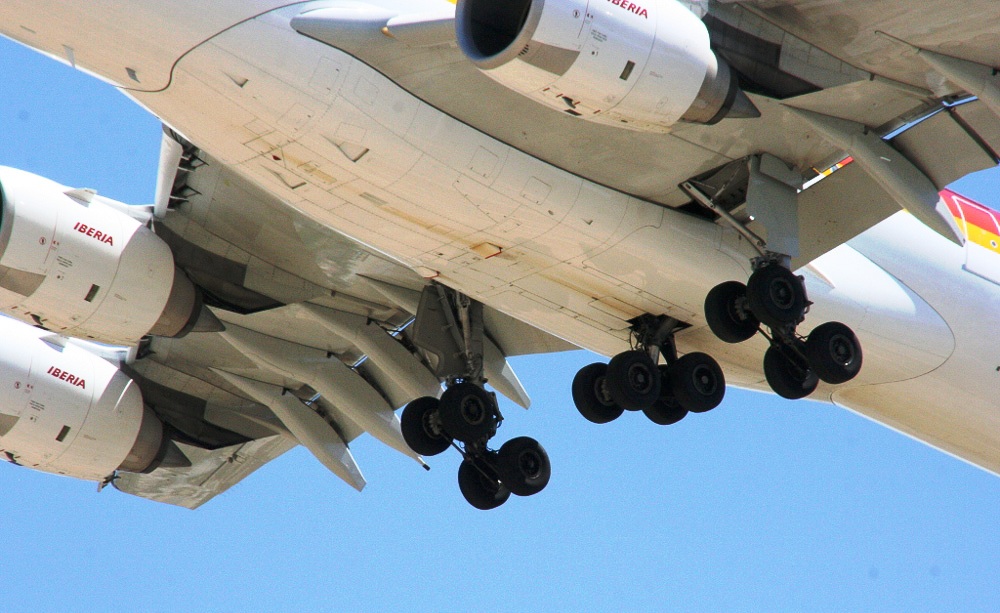
For those of us who experience fear of flying, a negative interpretation of normal inflight occurrences often feeds the anxiety we feel. That can be due in part to the fact that unless we’re aviation geeks or professionals, most of us don’t really understand what happens during a flight. If only we had more information on the aeronautical side of things, our fears and anxieties would likely dissipate, and that’s the reason why such information is included in virtually all programs – including Iberia’s own – designed to overcome aerophobia.
First of all, let’s start from the basic fact that an airplane flies simply because its wings are designed in such a way that a pressure differential is created between the air that passes above the wings and that which passes beneath. If you’ve ever stuck your hand outside a passenger car in motion, you have felt these forces: position it horizontally, and the air will push the hand backward, but tilt it even slightly and it will be pushed both backward and up. Presto: you’re flying.
Furthermore, despite its great weight, for an aircraft air is not some empty vacuum in which it is miraculously suspended; it’s more analogous to a highway, with its own bumps and rough patches. Keeping that in mind, following are the key moments in an average flight:
- The aircraft takes off with double the power necessary to maintain its motion and lift, so that if one engine were to fail during takeoff, there would be no negative effect whatsoever.
- Once the plane has left the ground, the landing gear retracts into the fuselage, which produces a loud noise followed by a dull thud, in addition to a slight overall acceleration due to the fact that air resistance has lessened. Right afterward, the wing flaps will also retract, creating a certain amount of additional noise.
- Upon reaching cruising altitude, the pilot discontinues ascent by dropping the plane’s nose a bit and reducing speed, which passengers tend to notice (with the occasional gulp) as a change in angle, even a slight dive.
- Conversely, when the flight is nearing its destination, descent is initiated by reducing power and once again dipping the nose, which has been known to give some passengers a slightly unpleasant sensation, especially in the tummy.
- Upon reaching the arrival airport runway, maneuvers are initiated that are the reverse of those at takeoff – namely, the wing flaps extend, followed by the landing gear, which create a series of noises and that dull thud similar to that experienced upon ascent. This time, however, the air resistance will be greater and therefore more power will be supplied to the engines, which passengers will perceive as a slight acceleration.
- When the aircraft finally touches ground, there is a shake, followed by a strong braking which will continue until it has reached a manageable ground speed to approach the gate.
During all of this, it’s critical to keep in mind the following:
 Each aircraft is designed to fly perfectly with half the number of engines, and even in the extremely unlikely event that all of them failed, it would not simply drop out of the sky, as many people assume, but would be able to glide smoothly to earth.
Each aircraft is designed to fly perfectly with half the number of engines, and even in the extremely unlikely event that all of them failed, it would not simply drop out of the sky, as many people assume, but would be able to glide smoothly to earth.- Each plane’s vital systems are duplicated and even triplicated to assure their functioning.
- Turbulence is a completely normal atmospheric phenomenon that poses no risk to flight security because today’s aircraft are designed to withstand weather conditions up to and including hurricanes.
- Storms are also not an issue, as the engines are capable of absorbing large quantities of water and an aircraft can even withstand a lightning strike (being specifically engineered to conduct a lightning bolt’s electric charge through its external fuselage and dissipate it through the tail). In any case, it’s now possible for pilots to avoid the most severe storms, as all planes are equipped with weather radar that receives meteorological information in real time.
- If an aircraft were to encounter a flock of birds or another unexpected object in midair, the engines have been designed to absorb and expel them out the back with no more than a 30-percent loss of power.
- Aircraft design will also prevent, in the case of a violent landing, any detachment of wings or engine from the fuselage.
In conclusion, and as borne out each year by statistics, air travel is one of the safest means of transportation, and the nature of flying still involves a certain amount of odd sounds and sudden movements, which are completely normal. There are a couple of tricks and tips worth recommending to ease some of the in-flight discomfort you may experience:
- Use earplugs if you find that changes in air pressure affect you unduly.
- Some anxiety caused by turbulence may be eased by pressing your midsection with a blanket, pillow, or folded item of clothing – and of course make sure your seat belt is fastened around you.

image | José Balido, Andrew Fry

